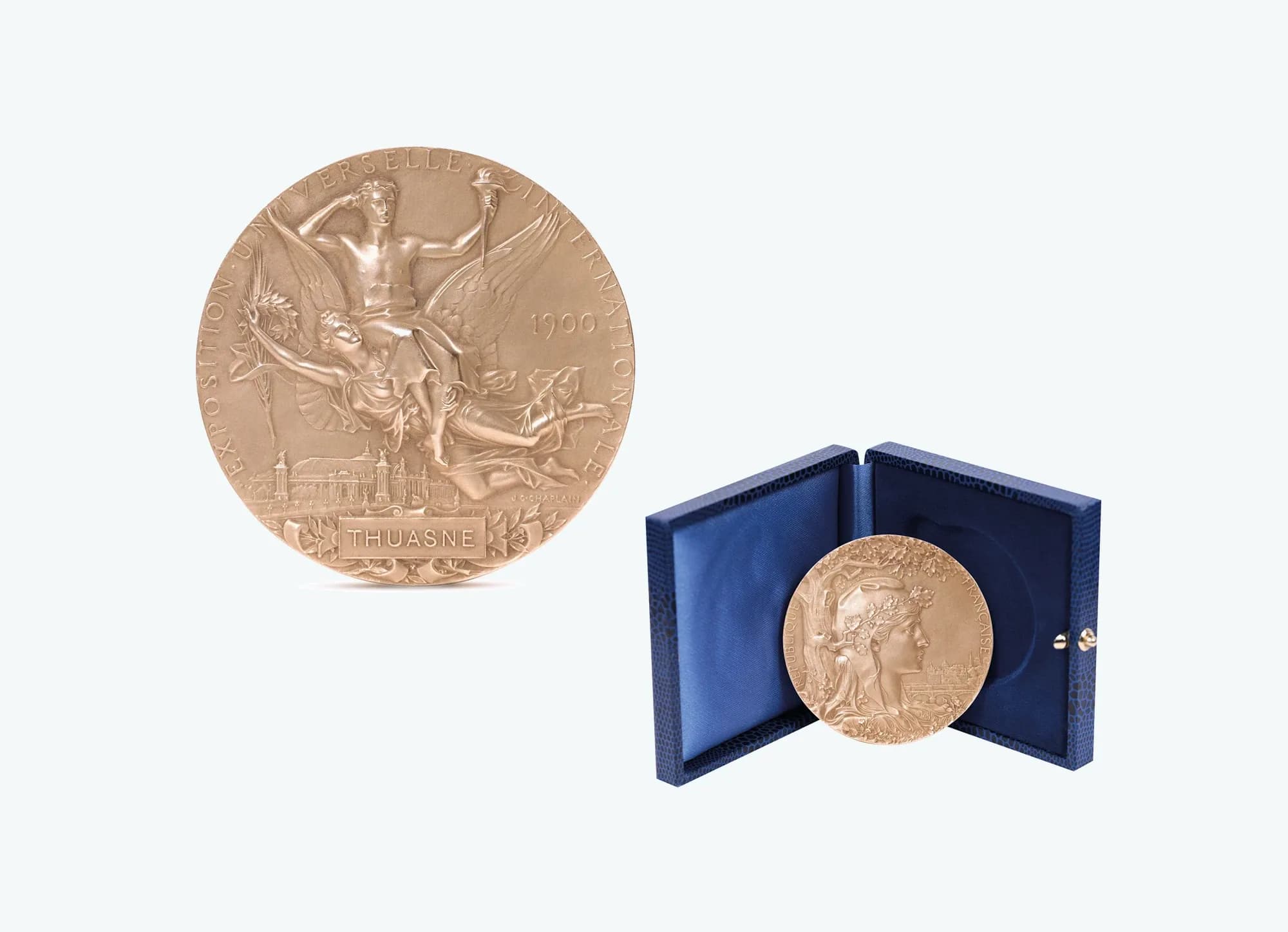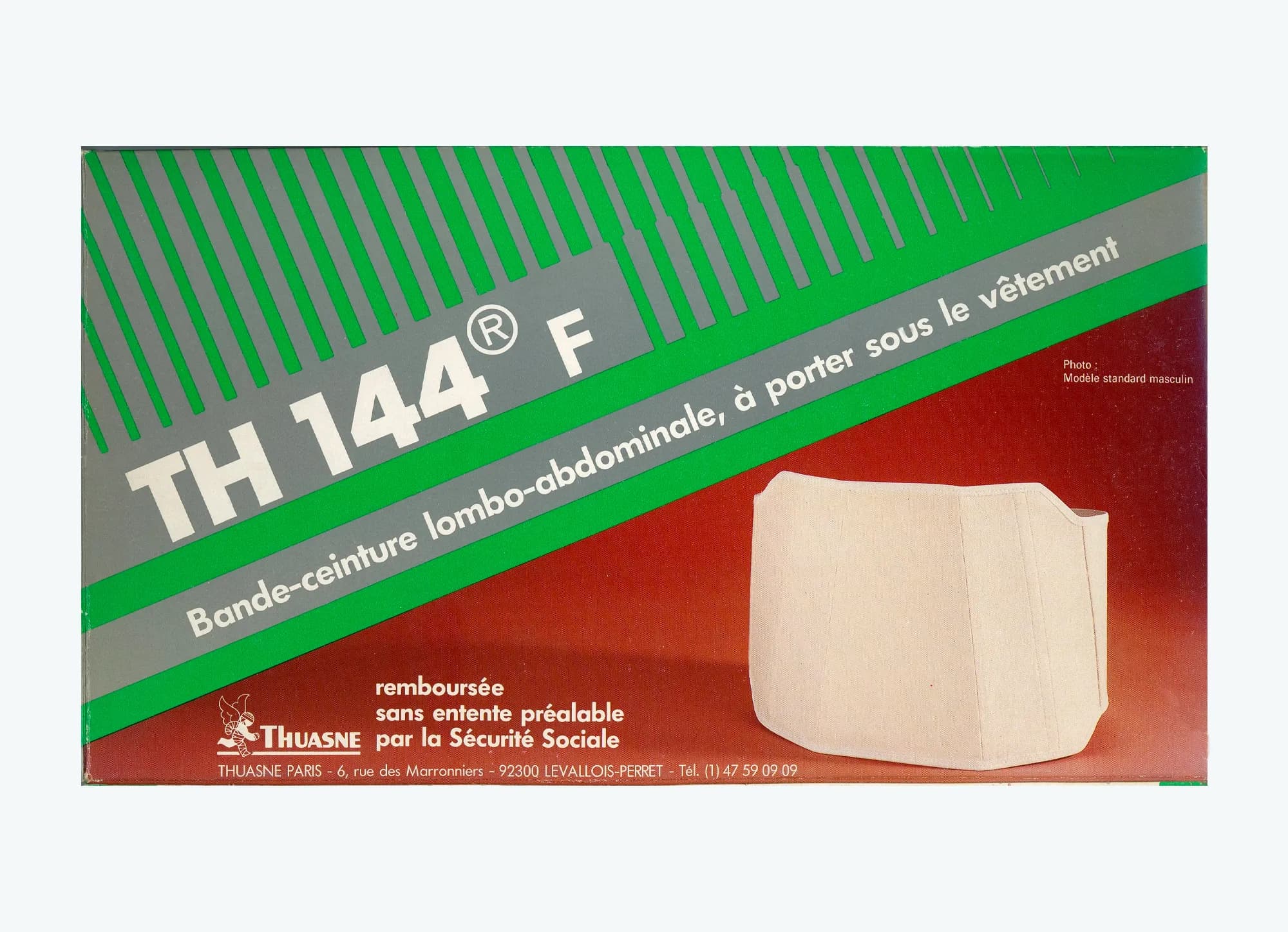From narrow elastic fabric to medical device: the Thuasne® story
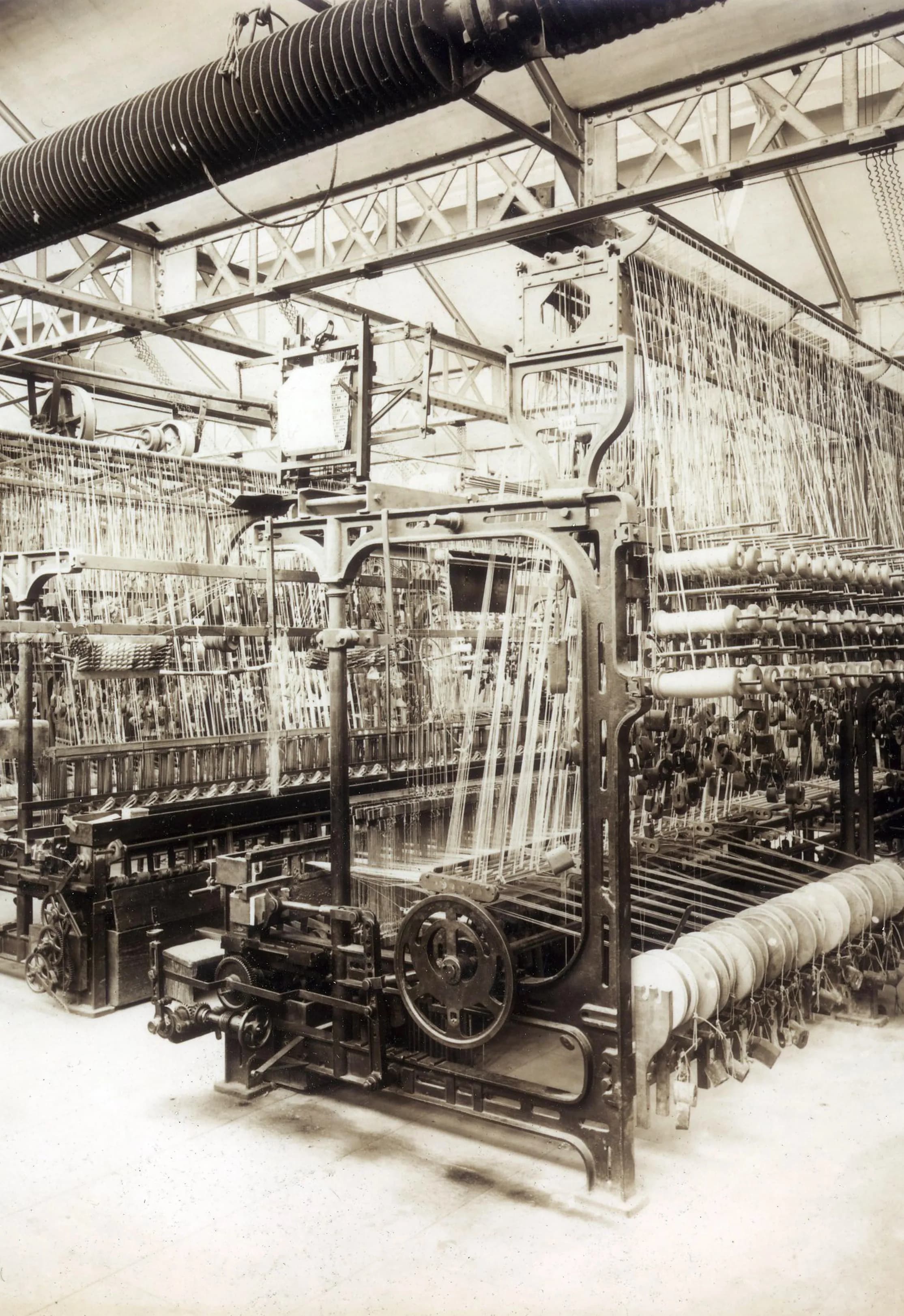
A French industrial adventure
The company was founded in 1847 in northern France and later became the Thuasne® Group. This family-run business was dedicated to the production of narrow elastic textiles, a rare technology for the clothing industry. This innovative spirit and industrial know-how earned the company a medal at the 1900 Paris Universal Exhibition.
In 1911, a fire destroyed the factory in Quévauvillers in the Somme. Maurice Thuasne, a 27-year-old textile engineer at the time, took over the company and bought a factory in Saint-Étienne, the birthplace of textile technologies in France.
During the First World War, he observed the usefulness of calfbands1 for treating soldiers' wounds, and confirmed the contribution of elastic compression to the healing process. Maurice Thuasne then refocused the business on the production of elastic medical bandages. This strategic decision guaranteed the company's independence and long-term future.
Treating, the "blue" thread of Thuasne®
From the 1930s onwards, Thuasne® has placed care at the heart of its mission. Based on empirical observations, later confirmed by clinical studies, Maurice Thuasne demonstrated the benefits of compression textiles, marking the beginning of therapeutic elastic compression.
This use rapidly extended to the treatment of back pain, giving rise to a new generation of non-drug health solutions: standardized, lighter and more accessible lumbar, thoracic and abdominal belts. The Cemen winding belt was born in 1953, followed in 1969 by the first TH144 lumbar belt. A pioneer in the clinical evaluation of its devices, Thuasne® continues to innovate with patented technologies such as Combitex fabric, and has remained the undisputed market leader in France for 75 years.
In the 1950s, Thuasne® worked closely with doctors to design the necessary solutions, validate their characteristics and work to ensure that they were covered by the French Health Insurance. Biflex, Néoplastex and lumbar belts were thus reimbursed. At the same time, Thuasne® diversified into sports with a range of headbands, notably worn by tenniswoman, Suzanne Lenglen.
A shift towards innovation and modernization
After the Second World War, Jean Queneau, a Polytechnique graduate and son-in-law of Maurice Thuasne, took over the management of the company. A trailblazer, he understood early on the importance of brand image and, in 1956, Thuasne® created its emblematic logo: a winged figure symbolizing the freedom and mobility of patients despite their injuries. Still present today, this logo has evolved with the Group while remaining faithful to its founding message.
Jean Queneau modernized company management and introduced the first computer systems in the 1970s. To ensure the development of its devices, Thuasne® has chosen to control every technology and every stage in the value chain. The company invested in electronic weaving machines, enabling it to patent new, original textiles and focus fully on the healthcare sector. This period saw the launch of industrial transformation and automation programs.

Industrial integration for excellence
In 1989, the company invested in a knitting factory in Saint-Etienne. It incorporated circular and flat knitting techniques for the production of medical compression socks and stockings. Its objective: to become the industry’s reference player.
By integrating these complementary technologies, the company rapidly designed a complete range of medical devices for the treatment of venous diseases, in line with the requirements of different countries. This decision reinforced Thuasne®'s already established leadership in the compression bandages market with the Biflex bandage.
Thuasne® built on this growth with the 1992 launch of Venoflex, a range of compression stockings, socks and tights now available in 58 countries.
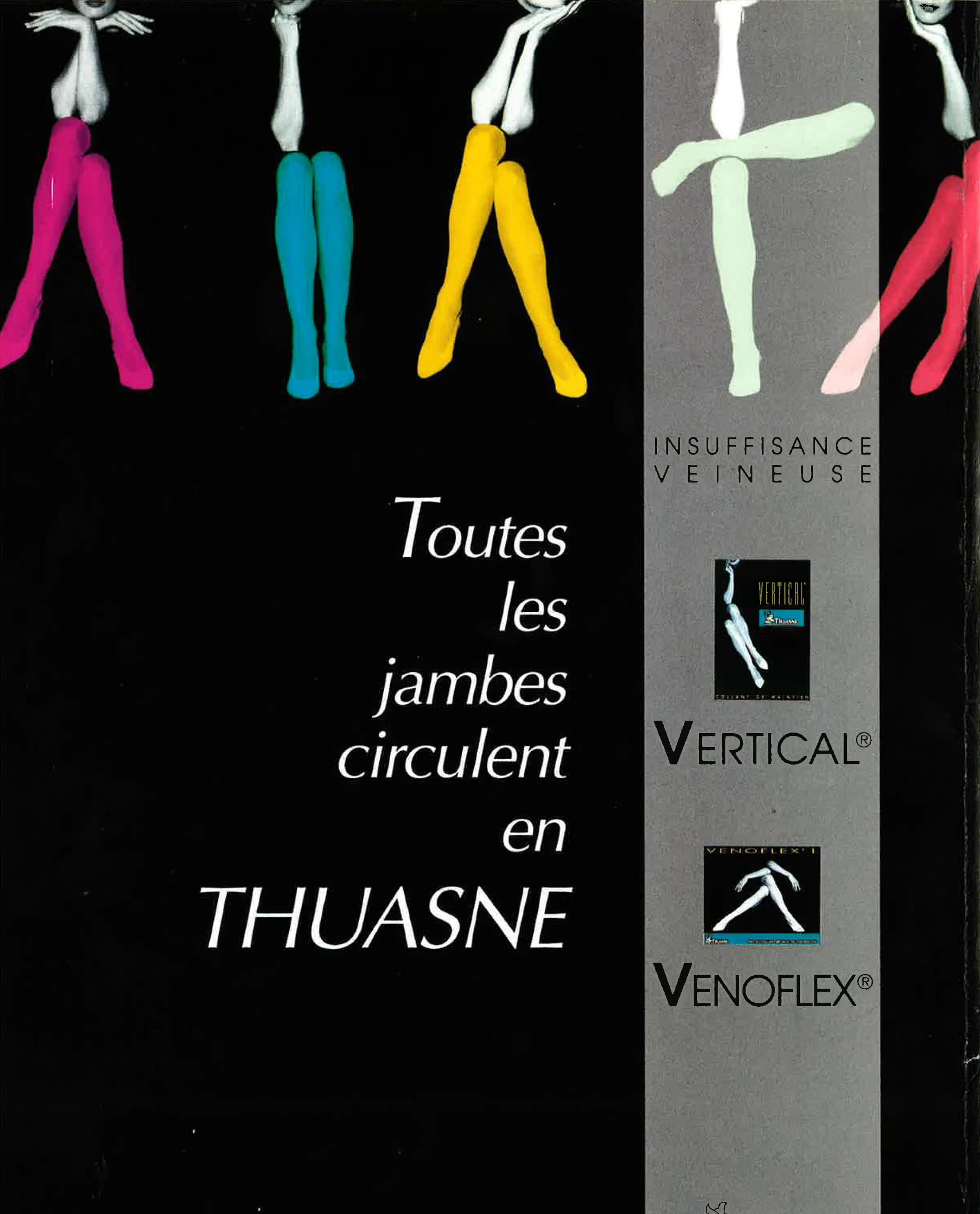
40 years of international conquest and strategic acquisitions
A leader in France, Thuasne® began its international expansion in Belgium in 1984. Opening up to Europe quickly became a matter of course: being European is both a vocation, a necessity and a strategic choice. This became a reality in 1991 with the acquisition of the German company Pezet Zimmermann, shortly after the country's reunification.
This first step marked the start of a rapid expansion. Between 1990 and 1998, Thuasne® opened one subsidiary a year in Europe, asserting its presence under its own brand name, withits own teams, convinced that healthcare cannot be delegated. At the dawn of the 2000s, the company became Europe's second-largest player in orthopedics and medical compression.
International expansion continued with a major turning point in 2010: the acquisition of Townsend in the United States, a specialist in made-to-measure rigid orthotics, thus combining technological progress and geographical expansion. This was followed by strategic alliances and the creation of subsidiaries in Asia, notably in India and China.
This exponential growth, which has enabled the company to multiply its size tenfold in 30 years, positions Thuasne® as a key player on the global medical device scene.
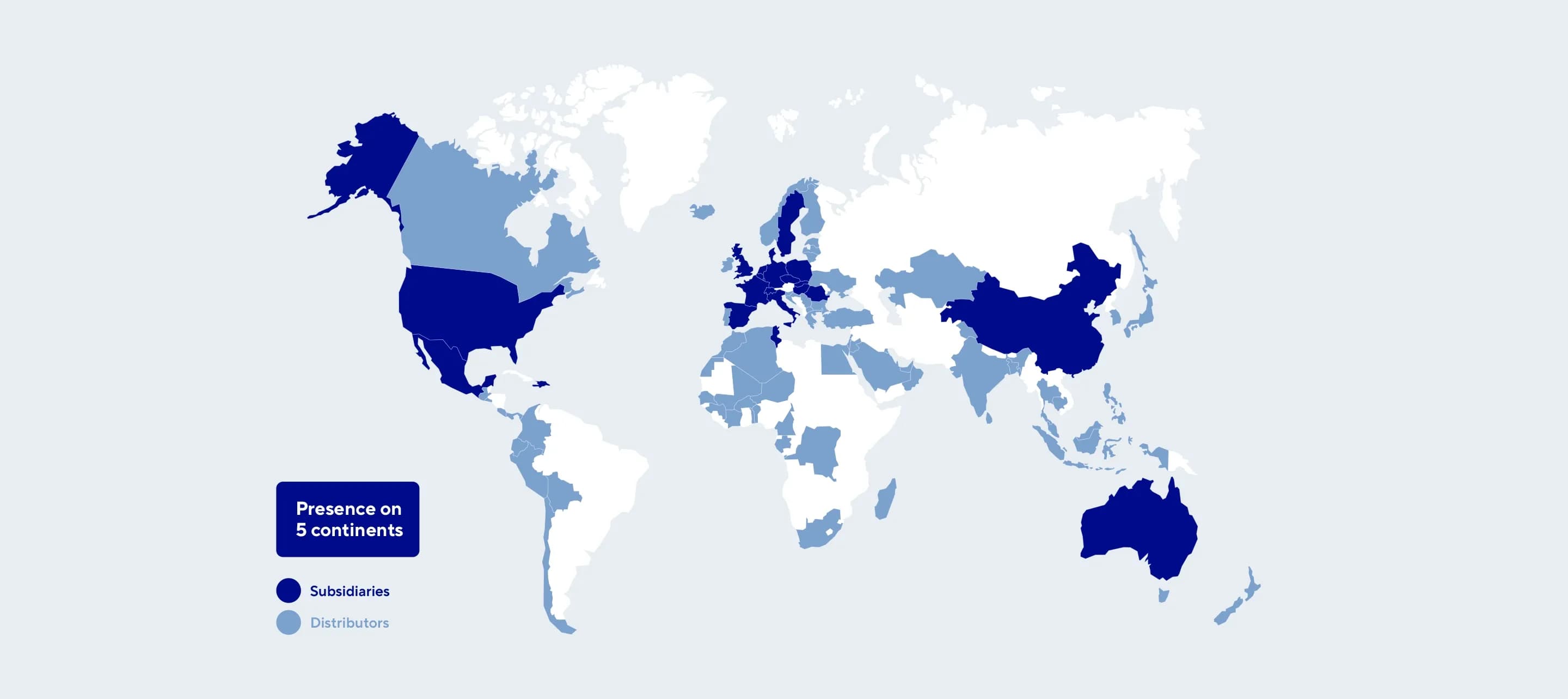
Innovation and digitalization: heading for the future
In 2018, Thuasne® opened the Thuasne® Lab, a space dedicated to digital and technological innovation. This division develops digital projects and supports the Group’s expertise in connected medical devices. More recently, Thuasne® created a division dedicated to artificial intelligence.
To reinforce its leadership, Thuasne® is forging strategic partnerships with medtechs such as Bionic Power. These partnerships aim to integrate the latest technologies and develop robotic solutions to help restore mobility and improve patients' quality of life.

1847
Company founding

1912
Establishment in Saint-Étienne

1932
Strategic turn towards medical and registration of the Biflex and Néoplastex brands

1981
Launch of the Lombax lumbar belt

1984
Creation of the first subsidiary outside France. This was followed by the opening of 18 other subsidiaries around the world

1991 and 2008
Acquisition of Pezet Zimmermann and Thamert in Germany

2010
Joint venture with Tynor in India

2018
Opening of the Thuasne® Lab digital technology hub

2022
Celebration of the Group’s 175th anniversary

2024
5th acquisition in the United States with the purchase of Corflex, Inc.
1 Ribbons of fabric around calves, from ankle to knee
